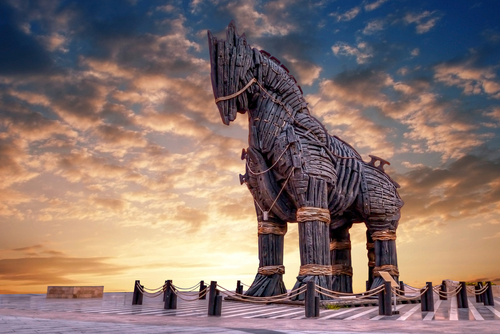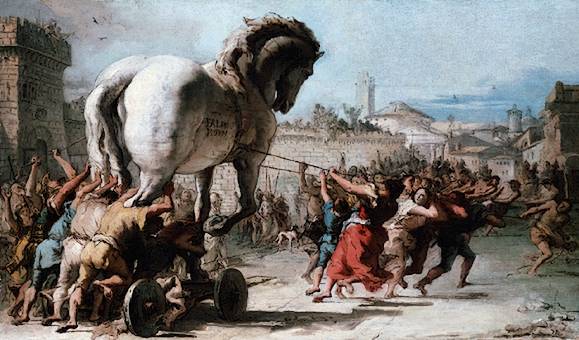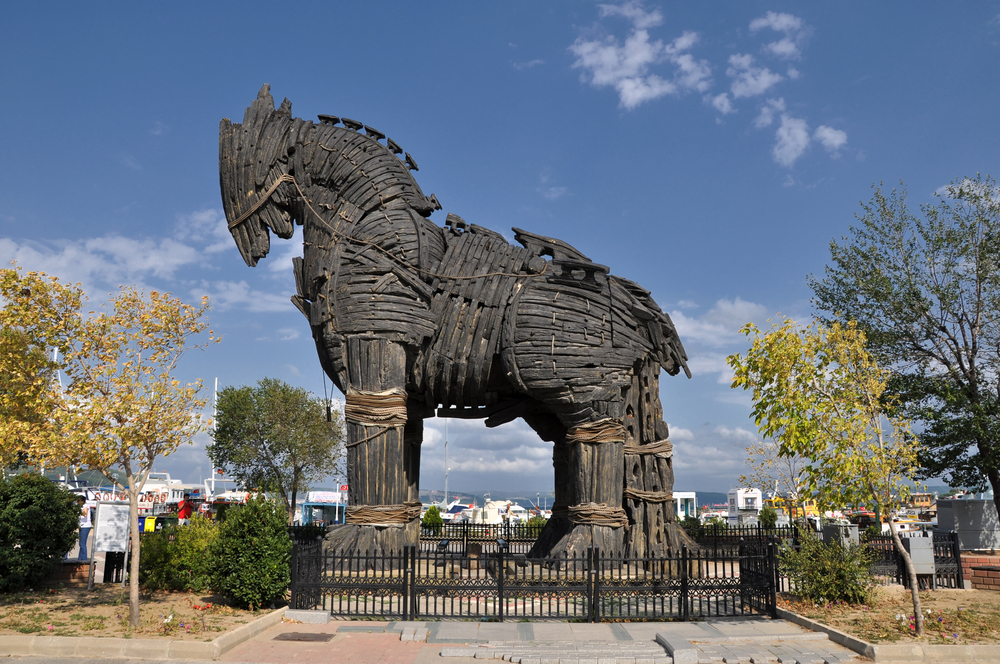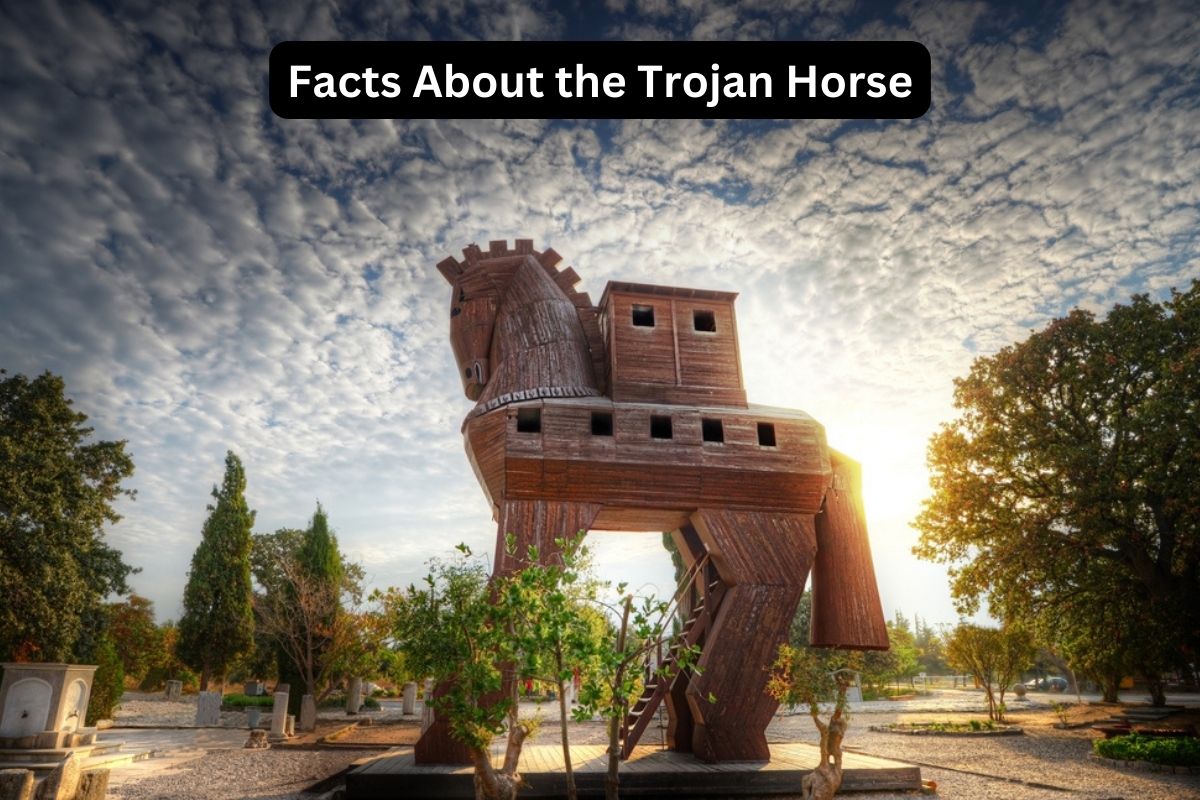The Trojan Horse is a legendary military strategy that played a central role in the ancient Greek epic, “The Iliad.” It is a tale of cunning and deception during the Trojan War.
The Greeks constructed a massive wooden horse and hid soldiers inside its hollow interior. Presenting the horse as a peace offering to the Trojans, the Greeks convinced them to bring it inside the city walls.
Under cover of night, the Greek soldiers emerged from the horse, opened the gates, and allowed the rest of the Greek army to enter Troy, leading to the city’s ultimate downfall.
The story of the Trojan Horse continues to captivate audiences and serves as a cautionary tale of the dangers of deception.
Trojan Horse Facts
1. Used during the Trojan War
The Trojan War is a legendary conflict that took place between the ancient Greeks and the city of Troy. According to Greek mythology, the war was sparked by the abduction of Helen, the wife of Menelaus, by Paris, a prince of Troy.
The war lasted for ten years and is chronicled in the epic poems “The Iliad” and “The Odyssey” attributed to Homer.

2. A large wooden horse
The Greeks devised a strategic plan to gain entry into the fortified city of Troy. They constructed a massive wooden horse, estimated to be about 30 meters (98 feet) tall.
The horse was carefully crafted to resemble a real horse, complete with intricate details like a mane, tail, and even a carved head.
3. Constructed by the Greeks
The Greek warriors, led by the cunning Odysseus, built the Trojan Horse as a deceptive tactic to infiltrate and conquer Troy.
The construction of the horse took considerable time and effort from the Greek soldiers, who were able to create a sturdy and believable structure that could house hidden soldiers within its hollow interior.
The design and construction of the Trojan Horse showcased the Greeks’ resourcefulness and their ability to think strategically during warfare.
4. Greeks hid soldiers inside the horse
To ensure the success of their plan, the Greeks selected a group of skilled warriors to hide inside the hollow interior of the Trojan Horse.
These soldiers included famous figures like Odysseus, Menelaus, and Ajax, among others.
The number of soldiers hidden within the horse varies in different accounts of the story, ranging from a handful to a larger contingent.
5. Presented as a peace offering to the Trojans
The Greeks left the Trojan Horse outside the gates of Troy and then pretended to sail away, giving the appearance that they had given up the war.
The Trojans saw the horse as a symbol of victory and a religious offering, believing it would bring them good fortune and protection.
Some accounts suggest that the Greeks even left behind a traitor named Sinon, who convinced the Trojans that the horse was an appeasement gift to the gods.

6. Trojans brought the horse inside their city
Despite the warnings of the Trojan priest Laocoön, who suspected treachery and famously exclaimed, “Beware of Greeks bearing gifts,” the Trojans ignored his advice.
They saw the massive horse as a trophy and a symbol of their triumph over the Greeks. Excited by their perceived victory, they made the fateful decision to bring the Trojan Horse inside the walls of the city, unaware of the danger lurking within.
The Trojans’ decision to bring the horse inside the city ultimately sealed their fate and led to their downfall. It showcases the deception and strategic brilliance of the Greeks, as they exploited the Trojans’ pride and desire for victory to gain access to the heavily fortified city.
7. Greek soldiers emerged from the horse at night
Under the cover of darkness, the Greek soldiers hidden within the Trojan Horse waited patiently for the opportune moment to strike.
When the city of Troy was asleep and vulnerable, they stealthily emerged from the horse and opened the gates to allow the rest of the Greek army, which had sailed back under the cover of night, to enter the city.
8. Greek army entered Troy and sacked the city
With the gates opened, the Greek army flooded into Troy, catching the Trojans off guard and unleashing a devastating assault.
The Trojans, awakened to the chaos and confusion, found themselves facing an overwhelming force from both within and outside the city.
The Greeks, having infiltrated Troy, wreaked havoc, looted treasures, and engaged in fierce combat, ultimately leading to the downfall and destruction of the once-mighty city.

9. The Trojan Horse is a metaphor for deception
The story of the Trojan Horse has transcended its historical context and become a widely recognized metaphor for deceptive strategies. The horse symbolizes a seemingly harmless or advantageous gift that conceals treacherous intentions.
It serves as a cautionary tale, reminding people to be wary of accepting things at face value and to remain vigilant against hidden dangers and deceit.
10. Its story has influenced literature and popular culture
The tale of the Trojan Horse has had a significant impact on literature, art, and popular culture throughout history. It has inspired numerous adaptations, retellings, and references in various forms of media, including plays, novels, films, and television series.
The enduring popularity of the Trojan Horse story highlights its enduring appeal and the timeless lessons it imparts about warfare, strategy, and the consequences of deception.
